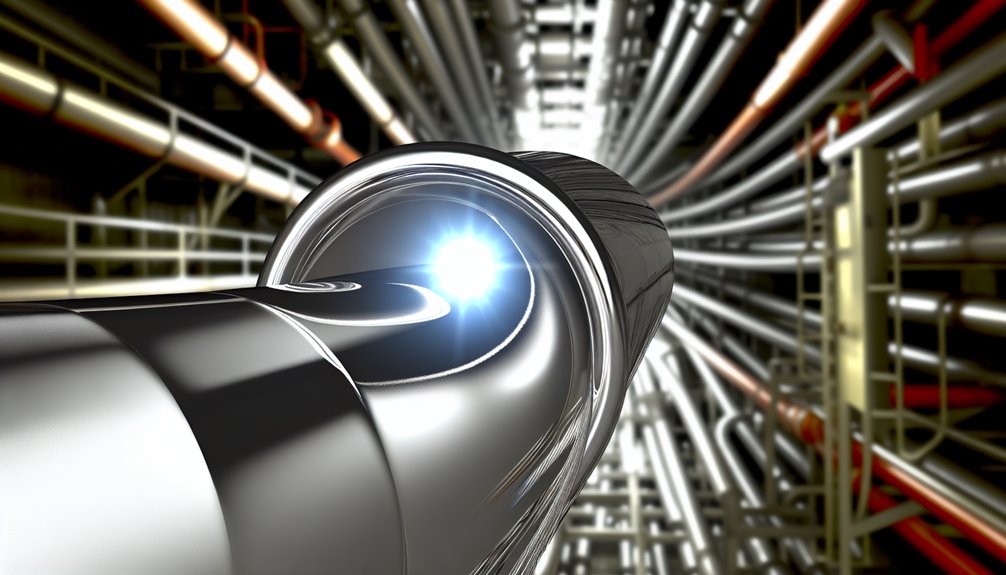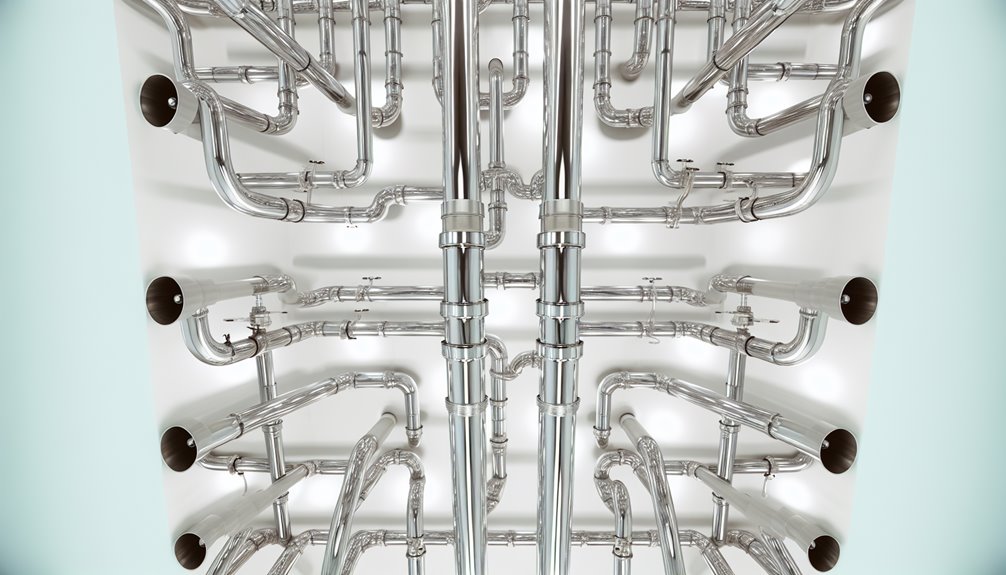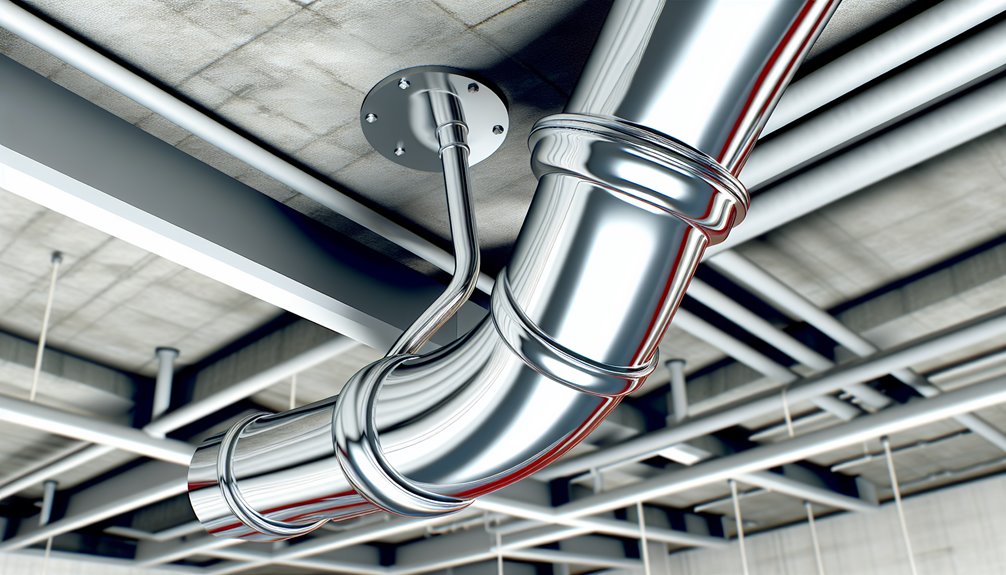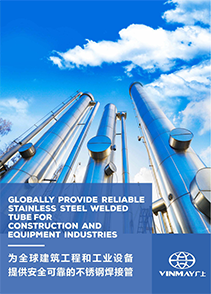Stainless steel pipe for fire protection systems offers unmatched corrosion resistance, high durability, and full compliance with international fire safety standards. With a high melting point and excellent mechanical strength at elevated temperatures, it ensures long-term reliability and structural integrity during extreme conditions. Its lightweight, malleable nature allows for easier installation and reduced maintenance over time. In addition, stainless steel’s recyclable composition supports sustainable construction practices. Continue reading to explore its key applications, compliance standards, and performance advantages in modern fire protection systems.

Stainless steel pipes are considered ideal for fire protection systems due to their superior corrosion resistance and durability.
These attributes make stainless steel fire protection tubing an excellent choice for ensuring long-term functionality and reliability. They also perform well at elevated temperatures, maintaining mechanical properties crucial for fire scenarios. In addition, stainless steel used in potable systems is certified to NSF/ANSI 61, reflecting stringent safety and quality standards that align with robust fire protection performance. Their polished surfaces and sanitary-grade finishes minimize crevices where bacteria can harbor, supporting hygienic design and long-term system cleanliness. Many installations also follow ASTM standards, which help ensure consistent quality and compatibility across fire protection components.
Compared to alternatives such as carbon or galvanized steel, stainless steel offers unmatched corrosion resistance, which is critical to maintaining the integrity of fire sprinkler systems.
The corrosion-resistant fire sprinkler pipe can withstand harsh conditions, ensuring that the system operates efficiently when needed most.
Withstanding harsh conditions, corrosion resistant pipes ensure fire sprinkler systems operate efficiently when needed most.
Its longevity reduces maintenance and replacement costs, making it cost-effective over time.
With its robust nature, stainless steel meets stringent requirements, offering peace of mind and control to those responsible for fire safety management and system upkeep.
Additionally, selecting grades like 316 stainless enhances performance in chloride-rich environments common to some fire protection installations.
Among the many attributes that make stainless steel a preferred material for fire protection, its fire resistance and durability stand out prominently.
Stainless steel fire sprinkler pipes are designed to endure extreme conditions, maintaining structural integrity even under high temperatures. This is crucial for guaranteeing that fire suppression systems remain operational during emergencies. For harsher environments, selecting 316 with its molybdenum content offers superior pitting resistance and durability. Its composition and processing deliver exceptional corrosion resistance, high strength, and hygienic performance in demanding applications. In addition, 316 is often chosen for chloride environments because it provides superior corrosion resistance compared to 304. In addition, 316 offers a melting point ranging from 1375°C to 1400°C, supporting performance under elevated temperatures.
The fire resistant stainless steel pipe does not ignite and has a melting point exceeding 1,400°C, which prevents the spread of flames and allows prolonged exposure to heat without degradation.
Additionally, stainless steel's resilience against corrosion ensures longevity, reducing the need for frequent replacements and maintenance.
This combination of fire resistance and durability makes stainless steel an ideal choice for those seeking reliable and robust fire protection solutions.
In addition, selecting appropriate grades like 304 or 316 in compliance with ASTM standards ensures the required corrosion resistance and performance for fire protection piping.

Compliance with fire protection standards is a critical aspect of guaranteeing the effectiveness and safety of fire suppression systems. Stainless steel piping for fire suppression must adhere to rigorous guidelines set by NFPA, EN, and ISO codes to guarantee peak performance. NFPA-approved fire sprinkler pipe, particularly those made from stainless steel grades 304 and 316L, are recognized for their robustness and reliability in demanding environments. These materials undergo stringent testing, receiving certifications such as ASTM, UL, and FM, which affirm their suitability for fire-resistant applications. In addition, ASTM standards define mechanical properties and dimensional tolerances that support consistent performance and interoperability across stainless steel tube applications. Drawing from established material specifications, grades 316L molybdenum and 304 are favored for their enhanced corrosion resistance and durability in harsh environments. For fire protection applications, 304 piping commonly aligns with ASTM A312 requirements, ensuring appropriate mechanical performance and dimensional control. Additionally, ASTM A249 specifies heat treatment at a minimum of 1900°F (1040°C) with rapid cooling to maintain austenitic properties and ensure corrosion resistance in tubing used for demanding applications.
- Involves multiple stages: raw material preparation, rolling and welding, cleaning, and finishing, with quality inspection at each stage to ensure standards are met.
| Standard | Certification | Material Grade |
|---|---|---|
| NFPA | UL, FM | 304, 316L |
| EN | ASTM | 304, 316L |
| ISO | UL, FM | 304, 316L |
Such compliance guarantees that the fire protection system operates efficiently, mitigating potential risks.
Guaranteeing the efficiency of fire protection systems not only involves adherence to compliance standards but also depends greatly on the material's ability to resist corrosion and the quality of the water used within these systems. Additionally, selecting materials with high molybdenum content enhances resistance to pitting and crevice corrosion in aggressive environments. A relevant reference for these systems is ASTM A269, which is commonly used for stainless steel tubing intended for general corrosion resistance and service across a range of temperatures.
Stainless steel pipe for fire protection, particularly the 316L stainless steel fire protection system, offers a robust solution. With superior corrosion resistance, 316L stainless steel minimizes the risk of system failure due to rust or degradation. In addition, its compatibility with orbital TIG welding and post-weld inspections supports consistent, high-integrity joints for reliable system performance. Leveraging passivation treatments can further enhance corrosion resistance and ensure long-term reliability in harsh service environments.
This material's resilience is vital, as it maintains integrity under the varying conditions experienced in fire protection installations. Moreover, maintaining ideal water quality is essential to prevent corrosion and guarantee long-term reliability. For enhanced durability and reduced risk of weld-related corrosion, the use of 316L stainless steel—with its lower carbon content and strong resistance to pitting and crevice corrosion—is recommended in demanding environments.

Installing stainless steel pipes for fire protection systems offers significant advantages due to their ease of installation and minimal maintenance requirements. The use of 304 stainless steel fire pipe guarantees adherence to fire sprinkler system standards NFPA 13, offering peace of mind to stakeholders. These systems also benefit from compliance with ASTM Standards, which govern material composition and performance for stainless steel pipes in safety-critical applications. Additionally, selecting alloys with strong corrosion resistance and tight dimensional tolerances supports long-term reliability in safety-critical environments. Stainless steel’s smooth surface and high corrosion resistance help prevent contaminant buildup, supporting reliable flow and long-term system integrity. Compared to alternatives, stainless steel’s high-pressure tolerance supports reliable operation in demanding fire protection scenarios.
The benefits include:
Additionally, specifying pipe Outer Diameter (OD), wall thickness (WT), and length in accordance with ASTM/ASME standards ensures proper pressure capacity and compatibility within fire protection systems.
While stainless steel pipes are often recognized for their durability and corrosion resistance, their application within fire protection systems is particularly significant.
Stainless steel pipes are extensively used in automatic fire sprinkler systems, both wet and dry types, due to their ability to withstand high pressures and temperatures.
In comparison to galvanized steel fire pipe, stainless steel offers superior longevity and resistance to corrosion, ensuring reliable performance in critical situations.
These pipes are also integral to hydrant lines and fire suppression networks, providing a robust infrastructure for fire safety in industrial and commercial buildings, warehouses, and airports.
Their high tensile strength and passivated surfaces make them a preferred choice, offering control and confidence in fire protection applications.
In addition, their proven performance in high-pressure environments and compatibility with standard fittings like elbows and flanges align with best practices seen across oil and gas and water treatment systems.

The efficacy of stainless steel pipes in fire protection systems underscores the need for meticulous design considerations to optimize system performance. Stainless steel’s corrosion resistance and durability make it a low-maintenance, high-performance choice across demanding environments, aligning with industry standards. Leading suppliers such as Thyssenkrupp provide products that meet international quality standards, supporting reliable performance in critical fire protection applications. Stainless steel’s inherent corrosion resistance also helps maintain water quality over the system’s lifecycle, reducing maintenance needs and ensuring long-term reliability. Additionally, selecting grades like 304 and 316 provides durability and corrosion resistance tailored to specific environmental conditions.
Stainless steel pipes enhance fire protection systems, emphasizing the importance of careful design for optimal performance.
Designers must account for various factors to guarantee that the systems function reliably under emergency conditions. Important considerations include:
These elements collectively contribute to a robust and efficient fire protection system.
In addition, selecting tubing that conforms to ASTM A554 ensures consistent mechanical properties and dimensional tolerances, supporting reliable performance in demanding environments.
Sustainability and lifecycle value are essential considerations in the selection of materials for fire protection systems, with stainless steel pipes emerging as a top choice. These pipes offer a combination of durability, resistance to corrosion, and minimal maintenance needs, contributing to their long-term value. Stainless steel's recyclability further enhances its sustainability profile, aligning with environmentally conscious construction practices. Its smooth, polished finish and corrosion resistance also support hygiene and longevity with minimal upkeep. Regular inspection and maintenance help identify early signs of corrosion, preserving structural integrity and extending service life in demanding environments. In contrast to alternatives that rely on a sacrificial zinc layer, stainless steel’s self-repairing passive oxide film delivers superior long-term corrosion protection in harsh conditions. Incorporating routine cleaning with non-chloride cleaners helps maintain the passive film and reduce rust risk over the system’s service life.
Below is a comparison table highlighting key attributes:
| Attribute | Stainless Steel | Other Materials |
|---|---|---|
| Durability | High | Moderate |
| Corrosion Resistance | Excellent | Varies |
| Maintenance | Low | High |
| Recyclability | High | Limited |
| Initial Cost | Moderate | Varies |
In addition, stainless steel’s recyclability and durability support circular economy objectives by reducing raw material demand and energy use across repeated lifecycles.
Stainless steel pipes are often priced higher than alternatives like CPVC and black steel, akin to a refined wine over table blend, offering superior durability and longevity, thereby ensuring control over unforeseen maintenance costs and system reliability.
Specific brands like Victaulic, Tyco, and Viking are often recommended for stainless steel fire protection pipes. These brands are recognized for quality, reliability, and compliance with industry standards, ensuring peak performance in critical fire suppression systems.
Stainless steel pipes can potentially lower insurance premiums for buildings due to their high durability, corrosion resistance, and reliability in maintaining fire protection systems. Their ability to minimize risks aligns with insurance companies' risk assessment criteria.
Stainless steel pipes can indeed be recycled after their lifecycle. This recycling capability aligns with sustainability goals, offering an environmentally responsible solution that minimizes waste and contributes to resource conservation, appealing to environmentally conscious stakeholders.
The manufacturing of stainless steel pipes ironically contributes to environmental strain despite. their eco-friendly reputation. Energy-intensive processes and resource extraction challenge sustainability. However, producers endeavor to balance efficiency by minimizing waste and promoting recycling initiatives to retain control.
In the evolving landscape of fire protection, the juxtaposition of vulnerability and resilience highlights the pivotal role of stainless steel pipes. While traditional materials may falter under pressure, releasing toxins and succumbing to decay, stainless steel stands resolute, offering unmatched durability and safety. Its ability to balance high performance with minimal upkeep underscores its value. As safety standards tighten, stainless steel pipes emerge not just as a choice, but a necessity, safeguarding lives and infrastructure with unwavering reliability.



